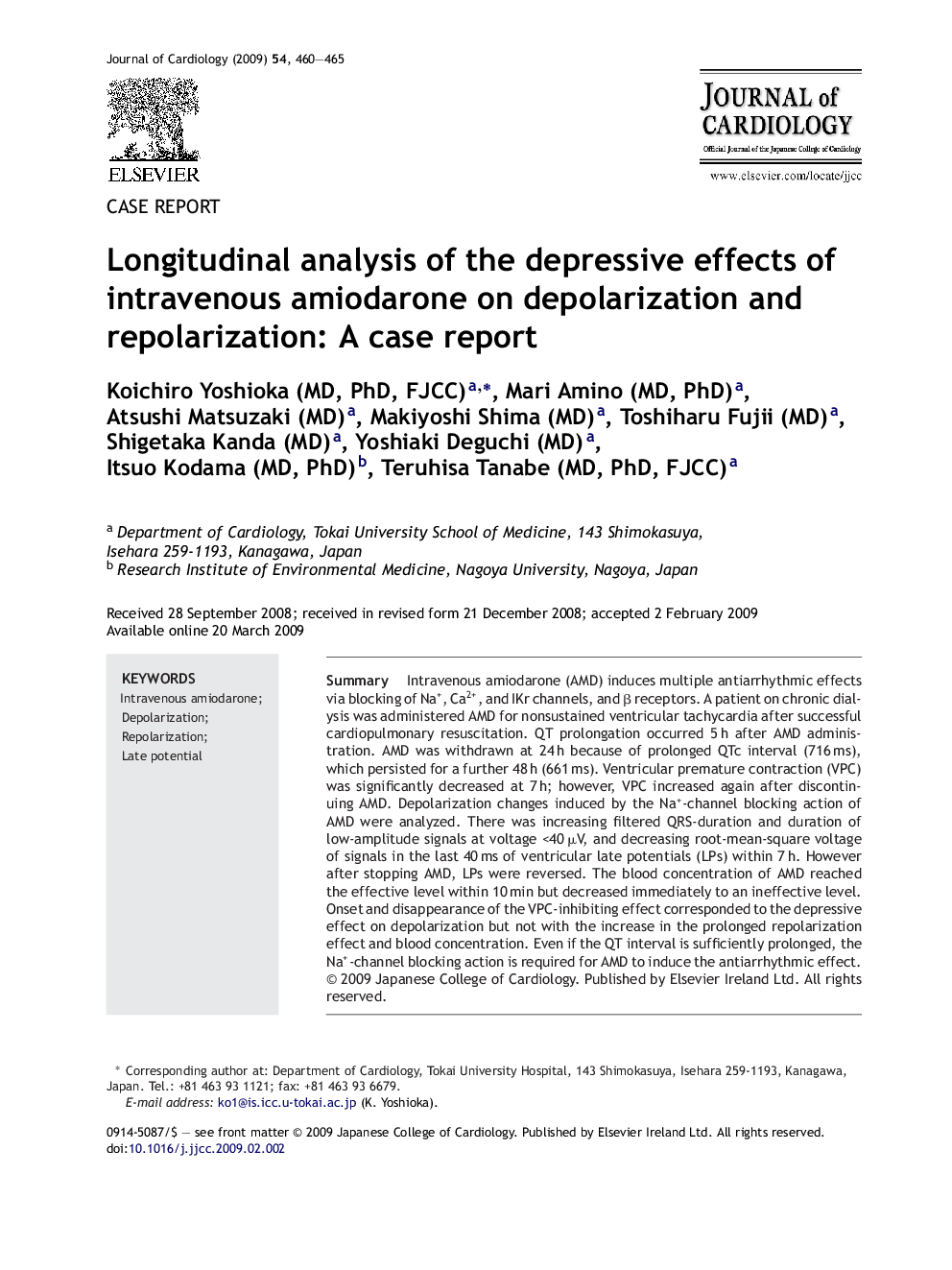| Article ID | Journal | Published Year | Pages | File Type |
|---|---|---|---|---|
| 2963544 | Journal of Cardiology | 2009 | 6 Pages |
SummaryIntravenous amiodarone (AMD) induces multiple antiarrhythmic effects via blocking of Na+, Ca2+, and IKr channels, and β receptors. A patient on chronic dialysis was administered AMD for nonsustained ventricular tachycardia after successful cardiopulmonary resuscitation. QT prolongation occurred 5 h after AMD administration. AMD was withdrawn at 24 h because of prolonged QTc interval (716 ms), which persisted for a further 48 h (661 ms). Ventricular premature contraction (VPC) was significantly decreased at 7 h; however, VPC increased again after discontinuing AMD. Depolarization changes induced by the Na+-channel blocking action of AMD were analyzed. There was increasing filtered QRS-duration and duration of low-amplitude signals at voltage <40 μV, and decreasing root-mean-square voltage of signals in the last 40 ms of ventricular late potentials (LPs) within 7 h. However after stopping AMD, LPs were reversed. The blood concentration of AMD reached the effective level within 10 min but decreased immediately to an ineffective level. Onset and disappearance of the VPC-inhibiting effect corresponded to the depressive effect on depolarization but not with the increase in the prolonged repolarization effect and blood concentration. Even if the QT interval is sufficiently prolonged, the Na+-channel blocking action is required for AMD to induce the antiarrhythmic effect.
